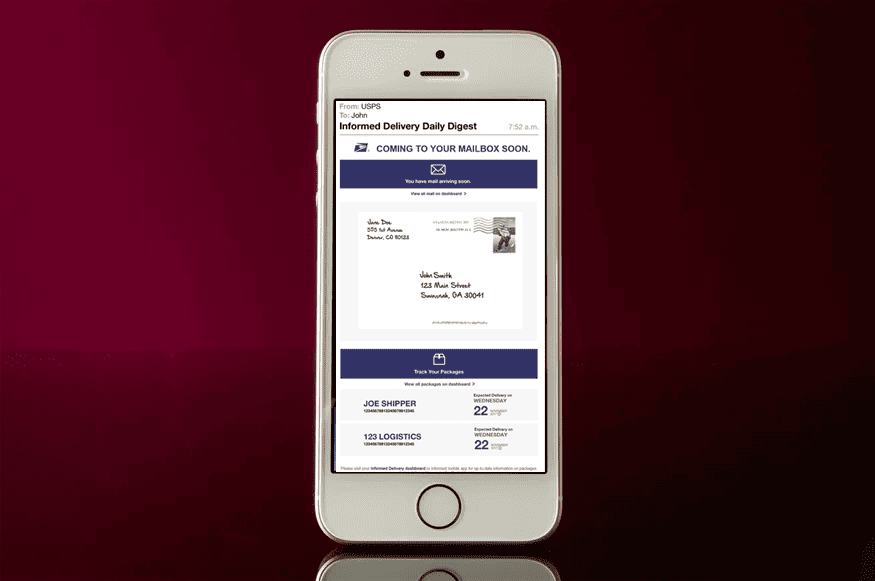
Did you know that the United States Postal Service offers a free service that gives you an additional digital touch in your postal marketing? This extra touch boosts response rates and increases marketing effectiveness. Did we mention that it’s free?
This service is called Informed Delivery. It uses the scanned images of the mail taken during regular postal processing and inserts them into a daily email digest delivered to the postal customer every morning. Package tracking information on Priority Mail, Priority Mail Express, and other trackable parcels is also provided. Images can be viewed on the user’s USPS online dashboard or in the mobile app, as well.
While Informed Delivery has been around for over five years, many businesses still don’t know about it.
Currently, 56+ million people are signed up for Informed Delivery, and the digest emails have open rates of 65.2%. Most Informed Delivery users check their digests first thing in the morning, so recipients can see your offers on their way even before the physical mailpieces arrive.
With a little extra time and effort (but still free), businesses can mail what the USPS calls “interactive campaigns.” In interactive campaigns, you can add full-color advertising images and clickable links, allowing recipients not just to see but to respond to your offers even before the physical mailpiece hits. You can also check clickthrough rates and other statistics to see how your campaign is working.
How do you maximize your mailpiece for Informed Delivery?
- Keep your design uncluttered and with enough contrast so that your pieces are readable even as grayscale images.
- Make sure that the key elements of your offer are visible on the addressed side of the piece.
- Consider using the full-color image and landing page options in the interactive campaigns.
USPS Informed Delivery is a free service, and you don’t have to optimize your designs in order for it to benefit you. But it sure works better if you do.
Want to learn more? Contact sales@imagemarkonline.com

In the ever-evolving marketing world, getting caught up in the digital buzz is easy. However, there’s a timeless charm to a well-executed print campaign that captures attention and makes a lasting impression. Print has unique qualities that can elevate your direct mail efforts. Let’s look at five elements that make print special.
1. Texture: The Tactile Experience
One of the most alluring aspects of print is its tactile nature. The feel of a quality paper stock can engage the senses in a way that digital can’t replicate. When recipients run their fingers over textured paper, it adds depth and memorable character to your message.
2. Scent: Evoke Emotions
Print has the unique ability to incorporate scents, turning a piece of mail into a multi-sensory experience. Infusing your direct mail piece with a relevant fragrance can evoke powerful emotions and trigger memories. For example, imagine the power of a bakery sending out mailers with the delightful scent of freshly baked bread!
3. Color: Vibrant and Impactful
Print allows you to use a rich palette of colors to capture attention and convey your brand’s personality. Unlike the limitations of digital screens, print can reproduce colors with a vividness and precision that captures emotion, not just attention.
4. Incorporation of Video Through QR Codes
QR codes enable you to bridge the gap between print and digital by providing a direct link to video content. This interactive element allows recipients to engage with your message dynamically, providing a unique blend of the physical and digital worlds. QR Codes can do more than send people to web pages. They can launch emails, make phone calls, and add events to recipients’ marketing calendars.
5. Dimension in a 3D World
Print isn’t confined to a flat screen. It has depth. Die-cutting, embossing, or even folding techniques can create dimensional elements that demand attention. When your direct mail piece pops out of the envelope or unfolds unexpectedly, it surprises and engages the recipient, making your message unforgettable.
Even in today’s digital world, direct mail holds a special place in buyers’ hearts. You can impact recipients at multiple levels by leveraging these five key attributes. So, don’t forget about direct mail next time you create your marketing calendar.
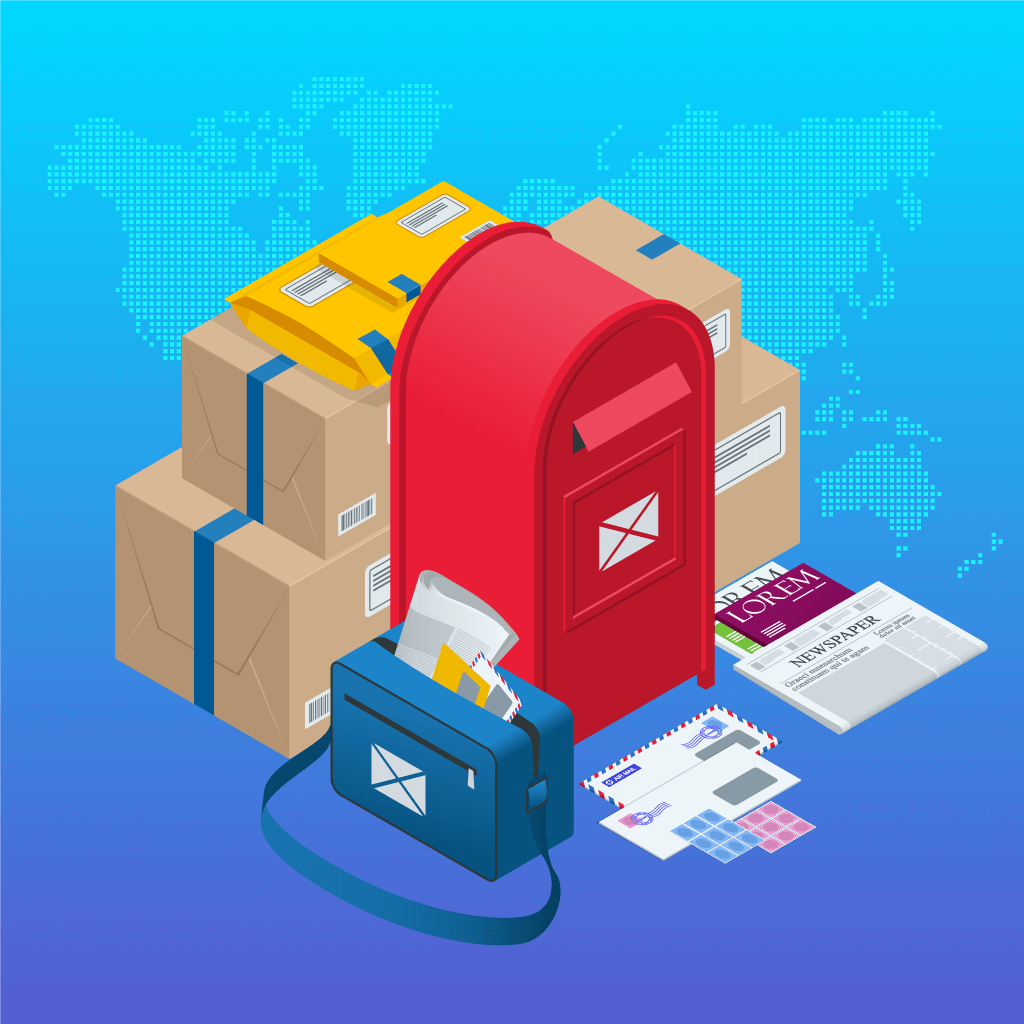
In the world of direct mail, creativity is everything. You want to design pieces that stand out and catch the customer’s eye. But be careful! Sometimes this leads to designing mail pieces in nonstandard sizes that, in some cases, can make the mailpiece undeliverable. Failure to meet minimum mailing dimensions is the number one mailing mistake cited by the United States Postal Service.
The USPS minimum dimensional standards for mail pieces are as follows:
- Minimum height: 3.5”
- Minimum length: 5”
- Minimum thickness: .007”
It’s critical to keep these minimums in mind when creating your designs. Even if you know the dimensional standards, making assumptions about meeting them is easy, which can have very bad outcomes.
Real Life “Oops!”
For example, when one postal customer wanted to create a unique piece, it designed a 4” x 4” card that it intended to send using Marketing Mail (Presorted Standard) non-automation letter pricing. The customer expected to pay more because the design did not meet the required aspect ratio but did not realize that the piece fell below the minimum sizing and could not be mailed.
In another example, a customer used lightweight paper to create a letter-size, bi-fold self-mailer to obtain commercial letter pricing. The customer figured the mail would be considered non-machinable because of the thickness of the paper. Still, they thought minimum thickness would be fine with the folded design. In reality, the thickness did fail to meet the USPS minimum mailing standards, and, again, the piece could not be mailed.
Ask Before You Mail
Any time you create a new mail piece design, run it by our experts before you mail it. Unique, creative pieces grab attention and can get terrific results, but they must arrive in the customer’s mailbox first!
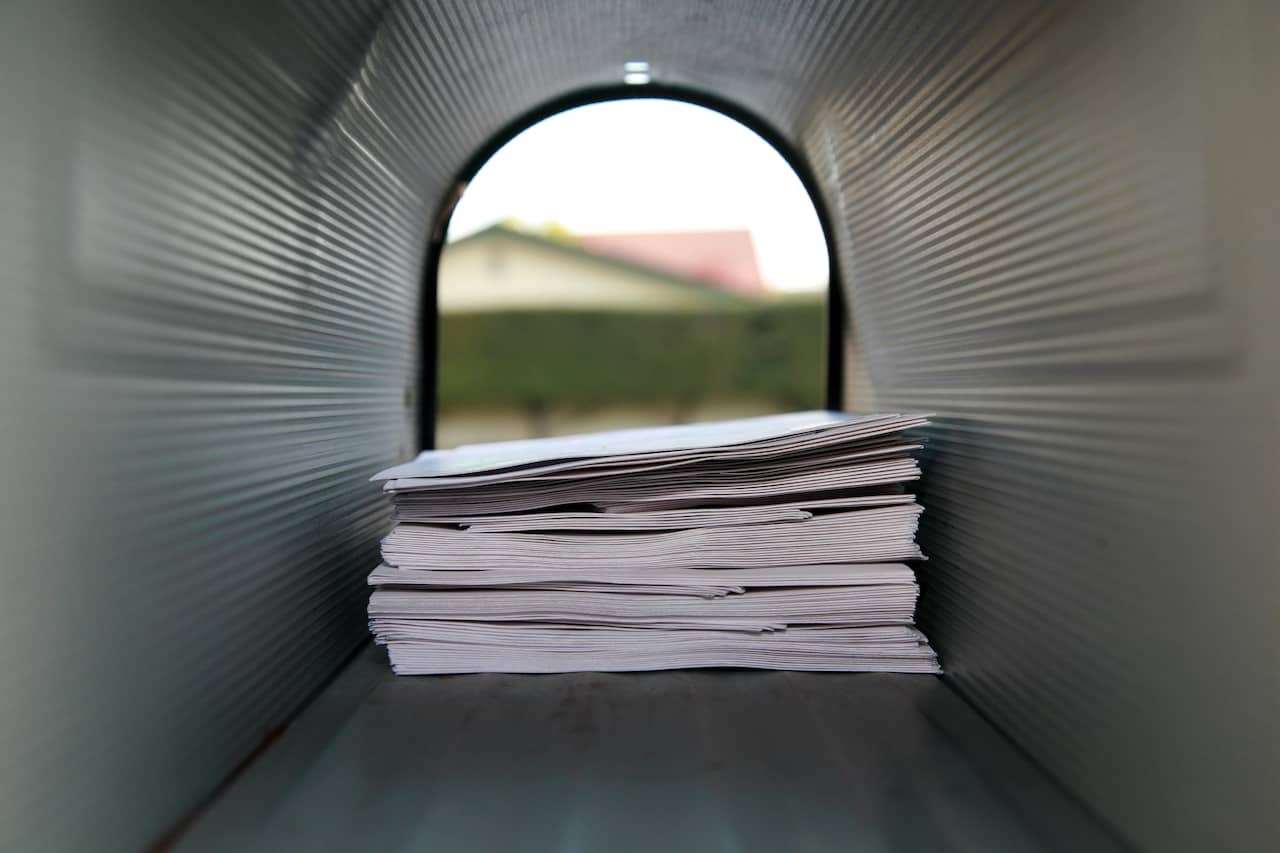
Want to geek out on marketing science? Check out neuromarketing, a field examining consumers’ responses to marketing stimuli. Neuromarketing looks at how the brain receives and processes information, and neuromarketing looks specifically at the impact of this process on the various marketing channels. Spoiler alert: These studies consistently find that while email is an important channel, it isn’t for everything. Especially for higher-end products that require more thought processing, direct mail is a better approach.
How do researchers come to these conclusions? They use three primary methods:
Eye tracking: Camera and infrared technology that monitor eye movements in speed and duration of attention. Eye tracking tracks visual attention in reaction to predetermined areas of interest.
Core biometrics: Sensors placed on participants’ fingertips that measure heart rate, skin conductance (sweat), motion, and respiration: Core biometrics gauge the depth of emotional engagement.
Functional Magnetic Resonance Imaging (FRMI): Brain scanners measure changes in oxygenated blood flow to reveal regional activation during a task or experience. FRMI pinpoints specific deep brain activity beyond surface cognitive function (e.g., empathy and reward).
What do these methods show? A good example comes from one study conducted by Temple University’s Center for Neural Decision Making in concert with the U.S. Postal Service Office of Inspector General (OIG). The study found that while participants could process the information from digital ads more quickly than from print ads, the details weren’t retained or recalled as easily later.
What made participants more likely to retain and recall that information more easily in print?
- They spent more time with physical ads.
- They had more robust emotional responses to those ads.
- While they stated similar preferences and willingness to pay for the item, whether it was delivered in physical or digital format, their brain activity indicated a greater subconscious desire for printed products.
“These findings have practical implications for marketers,” note the report’s authors. “If short on time, the digital format captures attention quicker. However, for longer lasting impact and easy recollection, a physical mail piece is the superior option.”
So, there you have it! When given a choice between print and digital media, especially for products and services that require deep cognitive processing, the brain loves print.
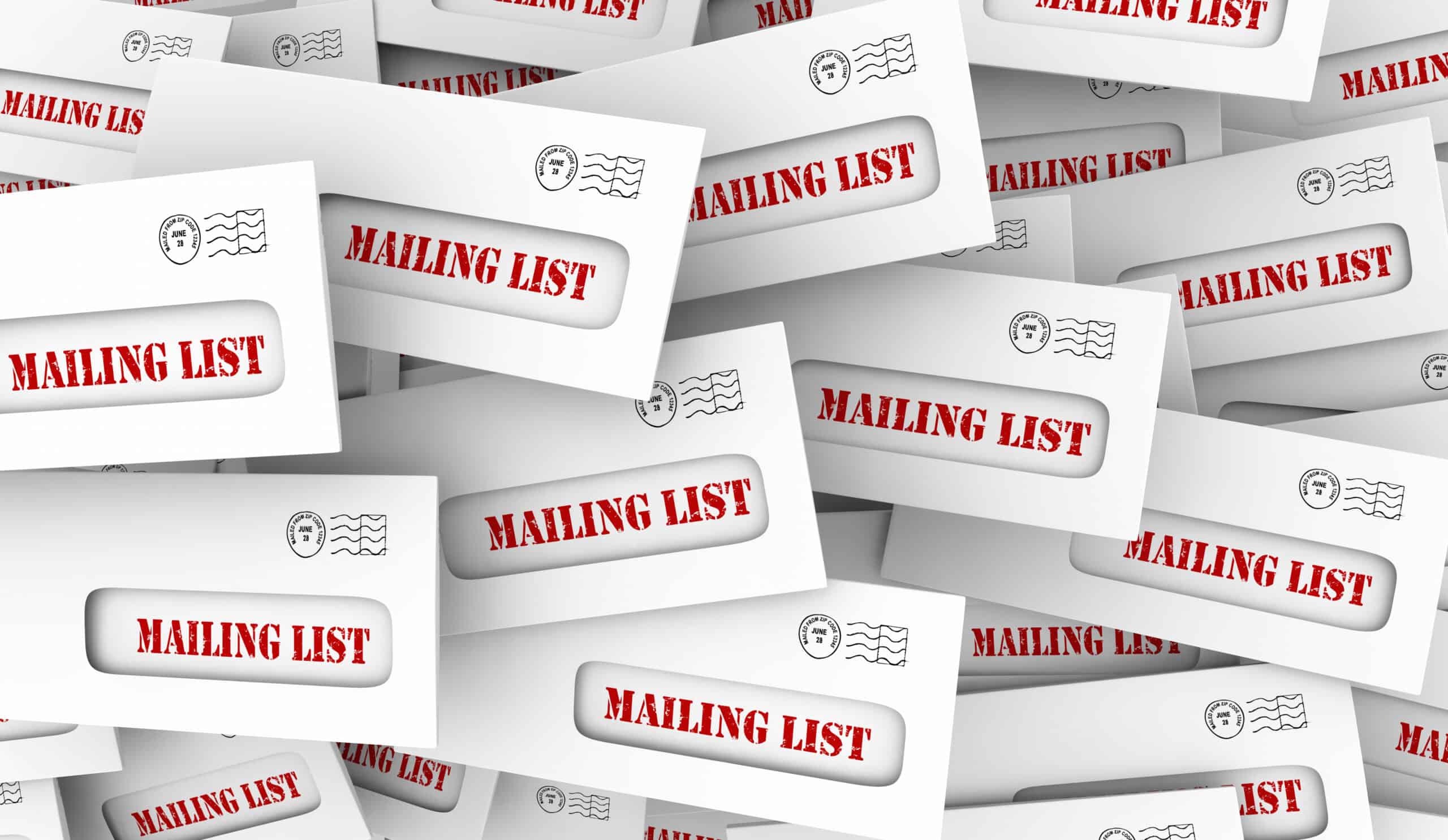
Keeping your mailing list up to date is essential for making the most of your marketing dollars. It ensures that your messages arrive in a timely fashion and provides other benefits such as cost savings and better targeting. Let’s look at five benefits of an up-to-date mailing list to motivate you to make this one of your top investments.
1. Gives you a strong foundation. Accurate, up-to-date lists are the starting point for creating relevant, personalized communications. Keeping your mailing list clean, accurate, de-duped, and up to date is a best practice that should be part of your routine. If you get in the habit of keeping up with the basics, it will help you with more sophisticated targeting later.
2. Keep customers happy. Nothing says, “We don’t care,” like a misspelled name or street address. Sure, your mailer might get there (eventually), but at what cost? Keeping your list up to date ensures that your target audience knows you care enough to get it right.
3. Keeps costs down. With an inaccurate list, you are printing and mailing pieces that may never arrive. Don’t waste money! Ensure that every piece gets to its destination. With an accurate list, you also save money by not sending duplicates to the same individual or household.
4. Provides anchor points. As you compile your records, basic data points can be used as reference points for future refinement and additions to that list. For instance, is Jane C. Cochran the same person as Jane Cochran? Can Bob Smith be distinguished from Robert Smith, Jr.? These questions can be answered by cross-referencing data points from an accurate mailing list.
5. Improves targeting. Once you are confident in your list, you can begin to build more detailed profiles of each person. You can purchase additional data to construct more complete profiles that will help you improve your targeting and personalize your communications even more.
Invest in your mailing list regularly. Not only does it help you create an accurate, up-to-date profile of your customers that improves targeting and saves money, but because your email, social, and mobile marketing all draw off the same list, it also benefits your marketing in other channels.
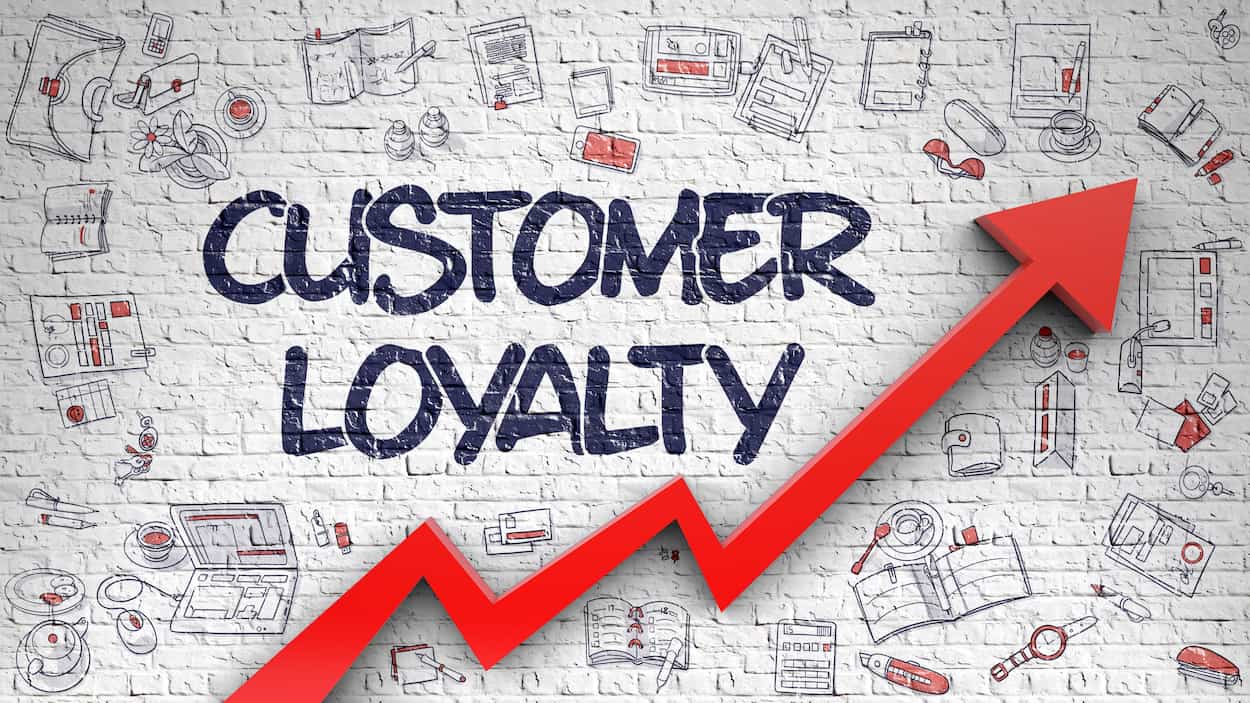
What does it take to create customer loyalty, the kind of loyalty that makes customers stick with you, even when their favorite sales representative, hair stylist or financial advisor moves on?
Here are some tips from the experts.
1. Know your customer base. Customer bases are not homogeneous. They are made up of different demographics, with different needs and with different motivators for shopping with you. Profiling your customers can tell you a lot about how to keep them. When was the last time you did a customer survey or conducted a focus group?
The more you get to know the unique makeup of your customer base, the more you are able to adjust products and services to respond to their unique needs and the more likely you are to hang onto their loyalty.
2. Make it personal. Shift from mass mailings and generic communications to personalized print communications as much as possible. This should go beyond “Dear <<name>>” and include content driven by demographics, demonstrated preferences or past purchase history. The goal here is not just to let your customers know that you know their names, but to increase the relevance of your communications to their lives.
3. Spread the communication around. Some companies assign each customer a specific customer service representative or sales consultant. This creates a special relationship between customer and sales rep that can be invaluable. The downside is that this relationship can become so valuable that, should the sales rep leave the company, your customer might be willing to leave with them. For this reason, encourage your customers to have multiple contact points within your company.
4. Increase the frequency. Stay in communication with your customers on a regular basis, not just when there is a special promotion or event. This is the idea behind most drip marketing campaigns. They help develop a relationship that creates a value beyond price and convenience and keeps your company top of mind.
5. Reinforce and reward loyalty. When customers are loyal, let them know that you appreciate it. Then reward them for that loyalty. Send them special “loyal customer” discounts, personalized to their unique habits and preferences whenever possible.
Retaining customers takes effort. It requires a customer retention plan and an intentional, focused effort to keep those customers you’ve worked so hard to have. What’s your plan?

Think you can’t afford direct mail because you’re a local business with a tight budget? Think again. With USPS Every Door Direct Mail (EDDM), you can send targeted direct mail for a postal cost of $.20
or less per piece. Even target addresses by age, household income,
or household size.
Use EDDM for just the right audience:
- Grand openings
- Local sales and promotions
- New locations
- Discounts and coupons
- Local events and more
Contact us to find out how!

Are you up for a surprise? In a customer satisfaction study of 10 major industries, nearly three-quarters (72%) of respondents indicated that they were delighted with the products or services they purchased, yet 88% said that they were willing to switch providers for any reason!
How can this be? If customers are happy with the products they buy, how can they switch so easily? Because so many companies offer products and pricing similar to one another’s. That’s why maintaining customer loyalty takes more than the basics. You have to make people feel valued, not just by offering them great stuff, but by how you treat them. Give them a great customer experience.
According to Price Waterhouse Coopers, 73% of consumers consider customer experience important in purchasing decisions. This means that all things being equal, they will go where they feel most valued and appreciated.
That’s why a consistent, high-quality drip of customer communications is so important. It makes customers feel noticed and valued, not just when you want them to purchase something.
- Set up a series of “nurturing” mailers throughout the year. Make it a continuous client contact program that demonstrates that you are sincerely grateful for their business at regular, pre-planned intervals.
- Use the data you’ve collected to grow your relationship with these customers. Offer valuable tips, newsletters, and case studies that remind clients of your commitment to service, value, quality, innovation, and loyalty.
- If you are going to cross-sell or upsell, make those suggestions valuable and relevant to your customers based on the information you have collected, such as their past purchases or subscriptions that are expiring.
- Ask for their feedback. People love when you ask their opinions. Now act on what you learn. Communicate through tangible actions that you not only care about what they have to say but are willing to act on it, too.
Direct mail isn’t just for customer acquisition marketing anymore. It is a critical part of effective customer retention.

Got a silo problem? If you’re like most companies doing targeted and personalized marketing, you do. You may have plenty of customer data, but it might be in different places (silos), and these places often aren’t talking to each other. As a result, your marketing is less effective than it could be.
Here are some risks to having siloed data:
- Unhappy customers. Whenever mail gets lost because you have the wrong address, whenever a mail piece arrives with a bad name, or you offer to sell a long-term customer a product they already own, you risk alienating that customer.
- High costs. The average price of every piece of returned mail is $3 (Source: Pitney Bowes). This is not just the postage and printing. It’s the cost of the piece coming back to you, figuring out what went wrong, and taking the time to fix it.
- Lost sales. How many marketing opportunities are lost because the data on customers’ preferences and behavior is siloed in different departments? That translates into lost revenue.
Let’s look at five steps for getting rid of those silos.
1. Connect inbound mail to outbound mail.
Build in tracking mechanisms that allow you to connect the incoming to outgoing mail. This can be as simple as adding a barcode unique to each participant. When the response envelope comes in, the barcode is scanned. This connects the incoming mail to the outbound file, linking the customer information together.
2. Centralize data capture.
Centralize mail processing in one location. Capture mail coming in from marketing, sales, customer service, web forms, and anywhere else in your company.
3. Extract what you need.
Your mail contains lots of essential details that can be useful to your print and digital marketing. Extract all of the insights you can, including names, addresses, channel preferences, transaction history, and customer surveys. Input it into a centralized database that can be accessed throughout the organization.
4. Look and learn.
Assign someone with a marketing and data background to analyze your database to understand what it tells you. Contained in there are critical nuggets about customer behavior, channel preferences, and more. Need help? Just ask!
5. Put it to use.
With a closed-loop on your mail communications and a centralized, up-to-date database accessible by all departments, you have a powerful marketing tool at your disposal. Take what you can learn and use it to improve your targeted and personalized direct mail marketing or other customer communications.
